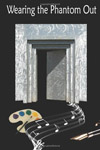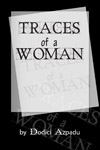by Dodici Azpadu
![]() You’ve worked hard on several drafts of a writing project, and now you’re ready to review your dialogue punctuation.
You’ve worked hard on several drafts of a writing project, and now you’re ready to review your dialogue punctuation.
End Punctuation
We know declarative sentences end with a period and interrogative sentences with a question mark, but how do the rules apply in dialogue? All punctuation marks go inside the quote marks, except colons and semi-colons; however, you are unlikely to use colons or semi-colons after quote marks, except in academic writing. Technically, you use a question mark outside of quotation marks if the entire sentence is a question, but this seldom applies to dialogue.
Do you know the expression “sleeping on a problem”?
In character dialogue, you can use a question mark with a structurally declarative sentence. “We’re going?” is allowable in context, especially if “aren’t we?” is implied.
Use a period if you or your characters are wondering or thinking about a question.
Bob wondered if he should attend the meeting? [Incorrect]
Bob wondered if he should attend the meeting. [Correct]
Use a period if you or your characters are reporting an indirect address. Notice that you don’t use quote marks with indirect address.
She said Bob didn’t know if he could get time off to attend the game. [Correct]
Avoid exclamations points!! Even one is often too many.
Dialogue Conventions and End Punctuation
Use quote marks for direct address. Commas, periods, question marks, and the rare exclamation point go inside the quote marks.
“Am I expected to climb that ladder”? she said. [Incorrect and ugly as well]
“Am I expected to climb that ladder?” she said. [Correct]
The question mark is not an end punctuation mark only. It can be used internally as part of a sentence, as in the correct example above. Also, you need not tag a question with he or she asked. The question mark makes asked redundant. However, you will occasionally want to emphasize the asking.
Single Quote Marks
Use single quote marks only if one of your characters is directly quoting another.
“I wasn’t expecting it,” she said. “Then he mumbled shyly, ‘So will you marry me?’”
If you have a scrupulous bent as I do, you might wonder about placing the single quote mark before the question mark. There is a perverse logic to doing so; however, resist the temptation. The convention is to add closing punctuation if the element warrants it, the single quote mark, and then the regular quote mark.
If a character speaks for more than one paragraph, start each paragraph with quote marks, but don’t close the quote in the previous paragraph until the speaker is finished speaking. In American genre fiction, it is rare for characters to speak for more than one paragraph or for more than a few sentences. In contemporary literary fiction longer character speeches are also losing popularity. Minimalist forms of technological communication are likely to exacerbate this trend.
More Dialogue Conventions
Each new speaker gets a new paragraph, even for a monosyllabic reply.
Generally, a character’s unspoken reaction to another character’s dialogue also starts a new paragraph. Decide if the reaction is worth a paragraph. Occasionally you can take liberties with reactions inside a single speaker’s dialogue when the reaction (or the absence of reaction, as in the example below) clarifies a character’s meaning or intention for the reader, but the reactions would be unnecessarily disruptive if formatted as paragraphs.
In the following example taken from my recent work, two brothers at dinner are discussing the care of their aging mother. Their conversation will continue after the section quoted below. Justine is the POV character.
“Momma doesn’t hint,” Carmello said. “She wants you to come around more often?”
“Not that.” Bernardo rolled his eyes. “It’s always that, but today she said I should call more because she could fall over dead and nobody would know until her body stank.”
Carmello grinned. “That’s the mother I know and love.”
“You don’t check in on her every few days?” Bernardo said.
Justine [Carmello’s wife] had been listening attentively to the brothers and now discovered them both looking at her. She swallowed the last bite of bluefish that suddenly tasted dry. “Are you sure you won’t have some salad, Bobo?” Bernardo declined. “Can I get you anything?” Carmello also declined.
The fact that the brothers each decline Justine’s attention-shifting offer of food is not worth a paragraph or two paragraphs in this case. The reactions are important to what Justine says and to the assumption the two brothers make about actual care of their mother. The passage also illustrates the customary placement of punctuation marks inside the quote marks before a tag is added with its end punctuation. Notice the use of the question mark in a structurally declarative sentence to show a characteristic way of speaking: “She wants you to come around more often?” Also notice the indirect address in the second paragraph. “It’s always that, but today she said I should call more because she could fall over dead. . . .”
One last point: If a tag interrupts a sentence of dialogue, you should continue the sentence mechanics.
“Will you,” he said, “go to the meeting with me?”
“I’m finished,” she said. “Do the rest yourself.”
Dodici Azpadu, MFA, PhD is a novelist, short story writer, and poet. Her fiction publications include: Saturday Night in the Prime of Life and Goat Song (Aunt Lute/Spinsters Ink) and subsequently Onlywoman (London, England). Living Room (2010) and Traces of a Woman (2014), both by Neuma Books, are available as ebooks. She’s currently at work on a novel, tentatively titled Living Lies.
 Her poetry publications include Wearing the Phantom Out (2013) and Rumi’s Falcon from Neuma Books. Individual poems have appeared in Malpais Review, Adobe Walls, ContraACultura (online), Parnassus, Sinister Wisdom, Latuca, The Rag, and The Burning Bush. Her work has also been anthologized in Centos: A Collage of Poems and Hey Pasean!
Her poetry publications include Wearing the Phantom Out (2013) and Rumi’s Falcon from Neuma Books. Individual poems have appeared in Malpais Review, Adobe Walls, ContraACultura (online), Parnassus, Sinister Wisdom, Latuca, The Rag, and The Burning Bush. Her work has also been anthologized in Centos: A Collage of Poems and Hey Pasean!
Dodici teaches “The Joy of Poetry” and “Craft of Creating Writing” classes through University of New Mexico’s Osher Lifelong Learning.
This article was originally published in the September 2011 issue of SouthWest Sage and is reprinted here by permission of the author.



Leave a Reply